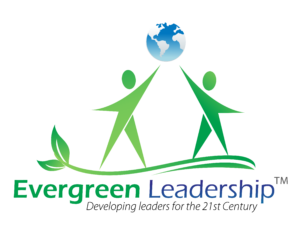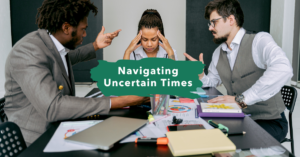I’ve been dreading today. It’s my “eat the frog” day. This is the day I’ve committed to myself to do what needs to be done that I have resisted, delayed, and dillydallied.
The funny thing is that it’s not that I CAN’T do it. It’s not that I WON’T do it (I will – just begrudgingly). It isn’t because I WON’T do it (it needs doing, and I am a responsible person).
It is just that this particular task is not a strength of mine. It requires an attention to detail that I find difficult. It involves deciphering obtuse and legalistic language, which I find annoying. It will require me to go back through the financial records I’ve stored somewhat haphazardly.
At the same time, other things beckon me. Tasks that involve conveying helpful ideas clearly and concisely. Tasks that involve human beings and not web based forms. Tasks that, for me, are more interesting, more valuable, and play to my strengths.
I admit that I’ve had the fortitude and good fortune to build a business that enables me to spend most of my time working in my strengths. As such, days like today feel all the more challenging.
I mourn the number of decades in my life that it was the opposite. Where the prevailing approach was to be in assignments that were designed to overcome my shortcomings rather than to celebrate my strengths. Where many days, I struggled to adapt, to learn, to perform at an adequate level those tasks that seemed so difficult to me. Where I’d go home depleted and spend evenings and weekends trying valiantly to replenish my energy and spirit.
I’m encouraged by the emerging work on strengths. For my lived experience has shown me that when I am able to use my strengths, a virtuous cycle emerges. When I’m naturally good at the work, my productivity is higher. My energy is positive, and that spills over to others around me. I am attracted to this work and am eager to learn more, so my performance improves. Which yields better results. Which reinforces my inner motivation to use that strength. And on and on and on.
The disheartening thing is that in our schools and workplaces, we focus far more on shortcomings than on strengths. Admit it – when your children bring home report cards, do you celebrate the top grades or obsess about the lower ones? Can you list, in painful detail, all your shortcomings, failings, and things you are working on improving, yet when asked what you do well – you don’t have a clue? Do you even know what your own strengths are…or those on your team?
In business, we talk about getting people “on the right seat” in the proverbial bus. And we’ve experienced what happens when someone gets moved out of a seat they struggle with – and into a seat where they can soar. It is pure magic – for them, for the team, and for the organization.
I’m not naïve enough to ignore the fact that there are things that each of us needs to have an acceptable level of competence at. Or that each of us benefits from the stretch that comes from doing those things outside of our comfort zone.
Yet the challenge, I believe for those leading others, is tipping the scales in favor of creating environments in which we find ways to enable people to use their strengths MOST of the time and ruthlessly eliminate time in non-strength areas because “it’s their job” or “it is good for them” or “it builds character” or “just do your job and shut up”. That we begin to take notice of other’s strengths as well as their deficits. Granted, it takes more effort to find ways to use their strengths. Effort, in my experience, which is well worth it.
Not sure where to start? Here are some simple steps:
- Discover the strengths you and others on your team possess. There are many ways to do this, including using an assessment, having a conversation, observing, and monitoring energy and output.
- Talk about it as a team. List out strengths (some each person may know and some that others will see in them). Candidly discuss where people can work into their strengths and where they are wallowing in their weaknesses.
- Find those opportunities to use an area of strength. Ideally, on a daily basis, but even being able to step into an area of strength for 5 or 10% of the time can be an oasis in a desert.
- Relinquish our dated, industrial era concepts of work as drudgery, something to be endured and difficult. Replace it with the notion that work can be an affirming, life-giving way to use your natural strengths and gifts while earning a living.
Even a little more time levering an area of strength goes a long way.
Gallop reports “that people who use their strengths every day are 3X more likely to report having an excellent quality of life, 6X more likely to be engaged at work, and 15% less likely to quit their job.
Gallop’s research indicates that employees reporting having a manager who “maintains a coaching relationship that emphasizes my strengths” were at the 93% engagement level. Those that gave their manager lower scores had only an 11% engagement rating.
Source: https://www.gallup.com/workplace/236561/employees-strengths-outperform-don.aspx
I’ve experienced the power of shaping my work around my strengths. After taking the Gallop Strengthsfinders assessment, I crafted my strategic business plan around my strengths (strategic, relationship, input, maximizer, learner) – and the difference is palatable. It’s easier. I do better work for my clients. I feel fulfilled and not frustrated.
My encouragement to you as you read this is to find ways to use your own strengths and to be diligent in uncovering the strengths of others, and then find opportunities for them to spend an increasing amount of time using them.
Who among us would not want higher levels of engagement, more productivity, more satisfaction, easier learning, and better energy?
A Post Script:
I suspect you are wondering what “my frog” or distasteful task is today? I’ll share – and there will be someone reading this who will be perplexed because spending time gathering financial documentation and submitting the application for a PPP loan forgiveness is right up their alley! However, it’s just not me!
And here is the end of the story. It’s done – submitted – accepted. And it took less than an hour (unless it gets rejected by the bureaucrats – which will create another “eat the frog” moment for me. Of course, the irony is apparent; I suspect that I spent 10 hours dreading a task that, in the end, was accomplished in only 1. But that, my friends, if for another blog!





One Response
Good read.
Ever since I took the supervisor job I’ve had many eat the frog moments which in return has built my confidence and made me stronger.
I still get pushed into things that i dread and make me uncomfortable but feel I’m getting better at it.
Comments are closed.